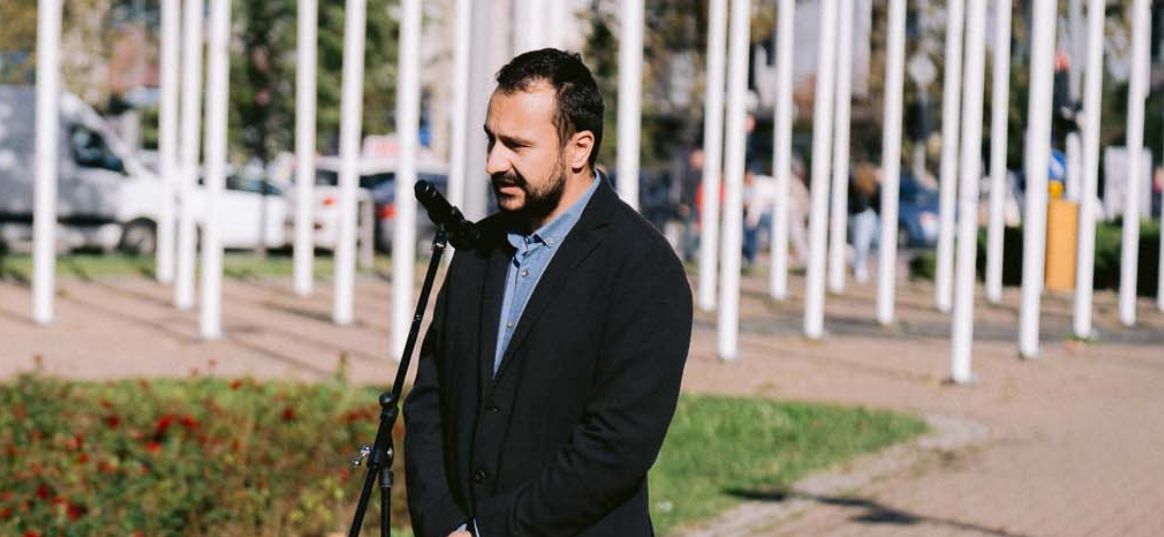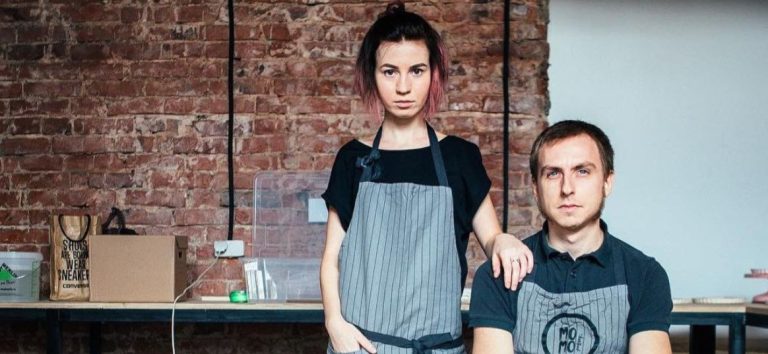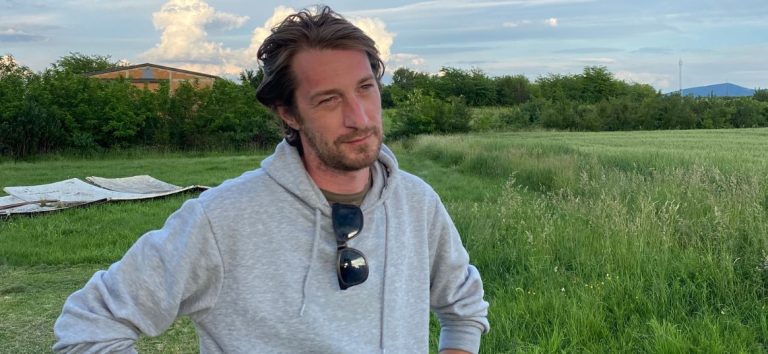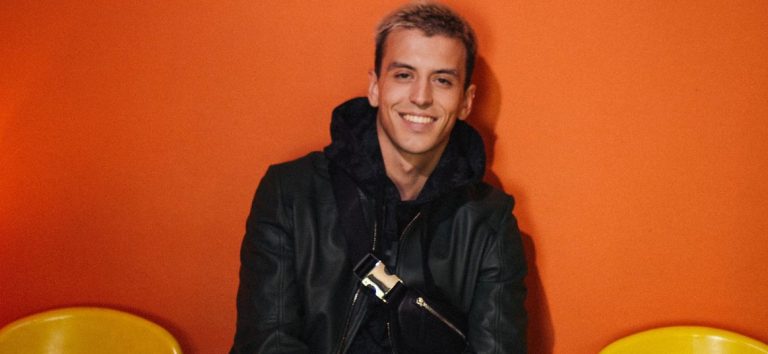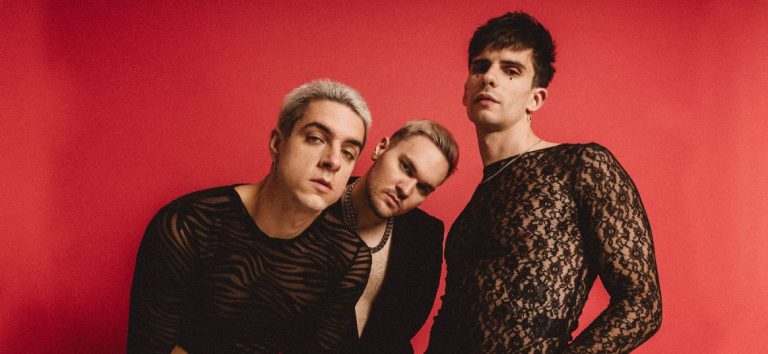‘The initiative to make a monument to Mitar Subotić Suba, our significant contemporary artist and pioneer of electronic music in our region, is very important in today’s time in which we live in order to nurture and preserve true and pure values based on personal contributions to culture and society in their most elementary form – artists like him have always shaped the zeitgeist. Mitar Subotić Suba is an artist whose understanding of sound, music and creation in general far exceeded musical genres, clearly defined postulates, and one could say also the time in which his, unfortunately, short creative life was set’ – said Milan Kulić, the author of the sculpture dedicated to Suba, recently discovered in the Liman Park, and winner of the sculpture-architecture call for the creation of the sculpture.
With his minimalist work, the author presented the energy of Suba’s creativity, inspired by the simplicity and layered content of his music that conquered the world. The sculpture by Milan Kulić was selected as part of the call previously announced by the ‘Novi Sad – European Capital of Culture’ Foundation in cooperation with ‘Mitar Subotić Suba’ Foundation.
Novi Sad, the city that was on the prestigious UNESCO list in the category of digital and new media, dedicated the contemporary sculpture to one of its most innovative artists, Mitar Subotić Suba, also a UNESCO award winner. We spoke with the author of the sculpture, which adorns one of the most beautiful parks in Novi Sad.
Last year, in the European Capital of Culture title year, the people of Novi Sad had the opportunity to enjoy the rich programme dedicated to the musician Mitar Subotić Suba in the Novi Sad District, and now we have a sculpture dedicated to him. What inspired you when creating the concept of the sculpture and how does your work correspond with Suba’s creativity?
Each molded form by itself does not say anything more about the process of its creation than what can be read from its surface in the form of traces of the modeling process. Similar to musical composition, modeling is always a process between idea and form; it is a personal moment of ‘conversation’ between the sculptor and the material in which both parties present themselves with their possibilities and limitations and try to overcome them in a certain way. Like Suba’s continuous dialogue with what tone is and how a complex musical composition can be composed, the modeling of this sculpture is the result of applying similar methods in a visual context.
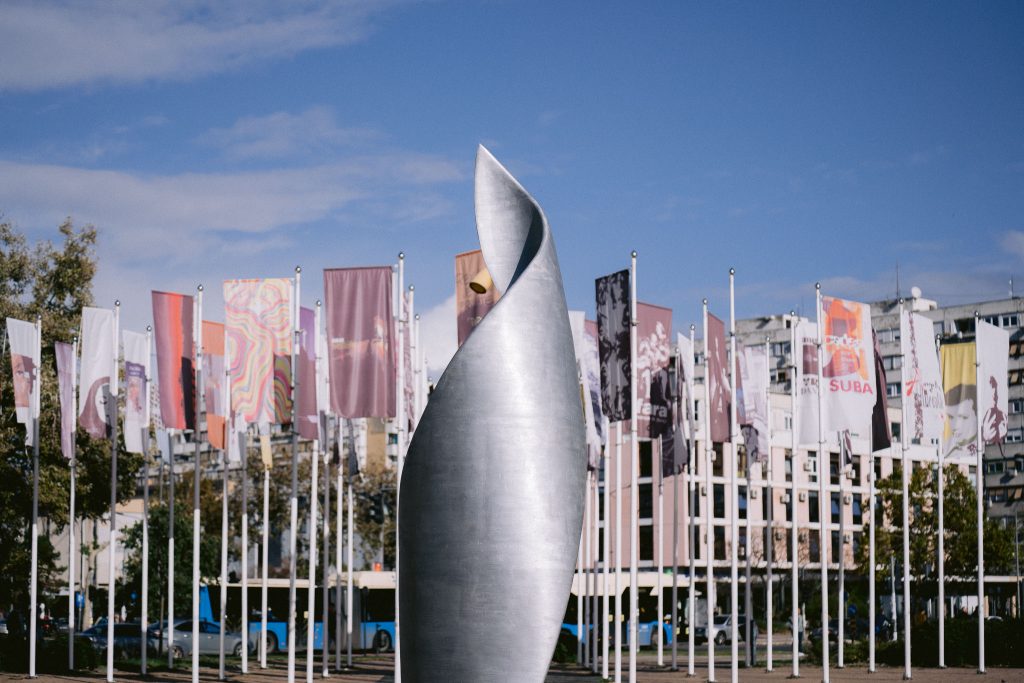
The sculpture has a minimal expression and was created as a result of analytical research into the basic elements of sculpture as a three-dimensional object (research into proportion, mass, volume, balance, rhythm). Already at the first step in the clarification of the idea, a parallel can be drawn with a musical composition – as opposed to proportion, mass, volume, balance and rhythm in the ‘composition’ of a three-dimensional work of art, there are tone, melody, harmony and rhythm in a musical composition – and therefore this sculpture can be defined as a three-dimensional analogy to a music piece. In this manner, the movement and energy of music are woven into the static solid nature of the sculpture, and the final form is inspired by the simplicity and layered content of Mitar Subotić Suba’s composition.
Nature shapes its forms through the action of natural forces and cyclical changes related to the general conditions of life, growth and disappearance. No human activity can be separated from adaptation to natural conditions, and therefore there are many similarities in shaping that takes place spontaneously in nature and conscious human shaping – the principle of universal (natural) harmony is the maxim of every creator and it is clearly expressed in Suba’s work. Adopting Suba’s principle of creation became the main motive for my creation of a visual solution that would adequately depict the essence of Suba’s work.
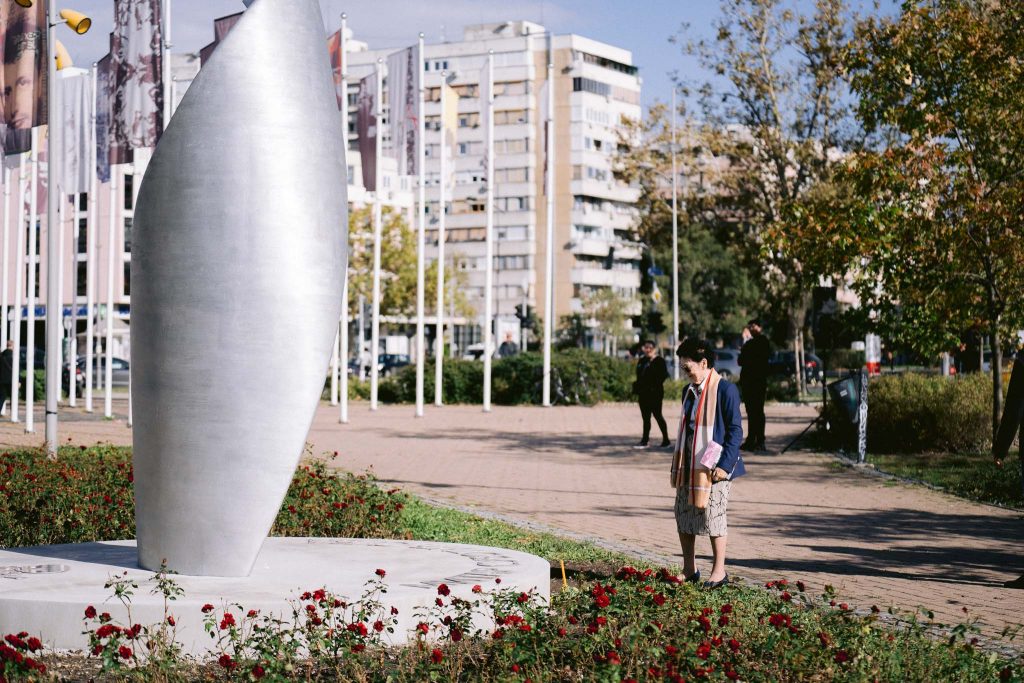
How do you see the location where the sculpture was placed? Do you feel that you have, in some way, extended the life of this great and important artist?
The position of the sculpture in the Liman Park was a great challenge in the implementation of the idea, because its perceptibility must be viewed not only on a micro-locational level (park as an expected place for rest and leisure) but also through a macro perspective as an urban city core – traffic and the pedestrian intersection of two city boulevards. For these reasons, my thinking about the sculpture went in the direction of a minimalist form that possesses the duality of its own visual content and therefore awakens different experiences in the viewer. The location in the Liman Park enables its unhindered communication with passers-by and opens a new ambient unit of the contemporary context of a city core.
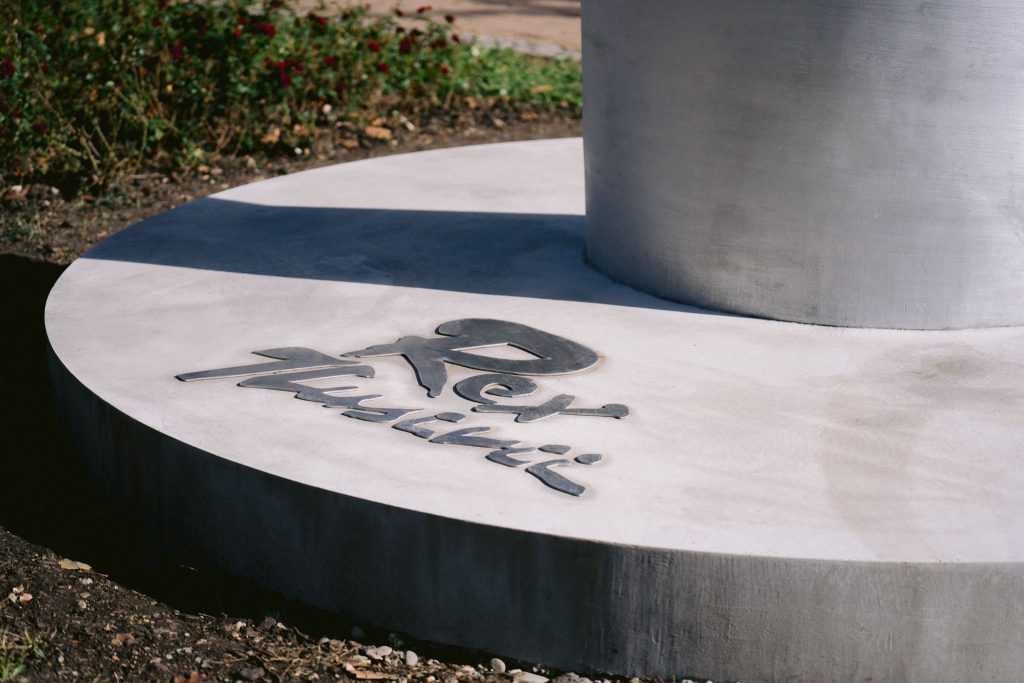
We usually see busts dedicated to important artists, but your sculpture is contemporary. How do you view the monumental sculptures?
An artistic form, unlike other forms, cannot represent reality itself, but only its image, i.e., the way it is seen and shaped by our cognition. The artistic form thus depicts the way in which consciousness depicts reality, making the work of art stand out as a separate reality within physical reality. Form thus becomes a manifestation of the creative principle that precedes and determines the sensibly perceptible work, or more precisely, a mediator that makes creation sensibly accessible and recognizable. Art, therefore, whatever it is made of and whoever it represents, cannot be reduced to a mechanical reproduction of known reality, but should become a living creation that shows reality as we see it. I would like it if artists who have the opportunity to create public monuments were guided by this principle.
In your opinion, what are the echoes of the ECoC title year for the city of culture such as Novi Sad? Do you think that new cultural values have been created in the city and beyond?
I believe that last year contributed a lot to the city, above all to artists who were marginalized for too long, left to their own devices without any city strategy for dignified work in culture and life in society. The opening of the city’s new cultural stations contributed to the diversity of the art scene, a new thought was created about what is the potential that can be developed and should be invested in. It will surely remain permanently implemented in the spirit of the city and the consciousness of the individual.
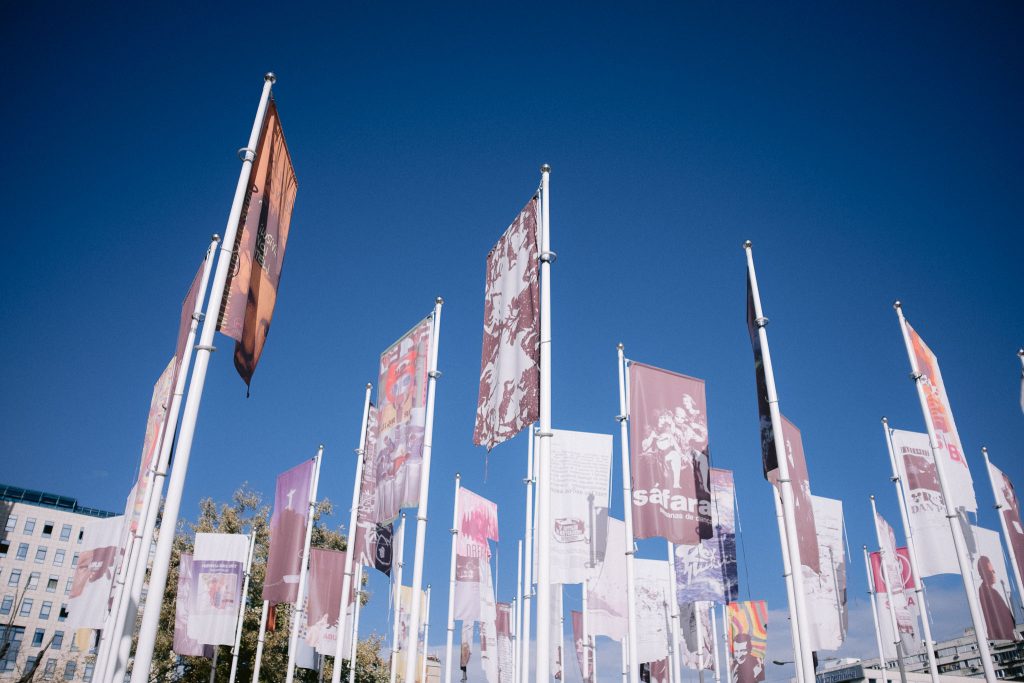
Photo: Vladimir Veličković

